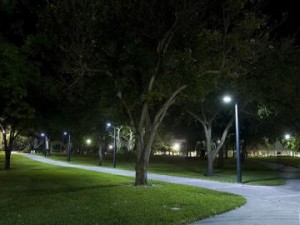 University lighting methods are a topic of discussion as colleges across the US are finding out that reducing their energy consumption by switching to LED and fluorescent lighting technologies will have a huge impact on their utility bills.
University lighting methods are a topic of discussion as colleges across the US are finding out that reducing their energy consumption by switching to LED and fluorescent lighting technologies will have a huge impact on their utility bills.
Baylor University in Texas is hiring an intern this fall to figure out exactly how to proceed on their journey to cost savings eco-conscious lighting for their campus. LED lights are already in use on the walkway leading from Pat Neff to the Baylor statue.
Baylor is currently spending in excess of $9.5 million a year to light up their campus. They dispose of more than 25,000 light bulbs a year. They estimate their savings will be at least 50 percent. LED’s are more expensive up front, but if you factor in the savings over the life span of the bulb, the overall cost savings is impressive.
Temple University in Pennsylvania just announced a conservation plan that will drastically cut their energy bills. They plan to reduce their energy use by 25 percent over the next two years. A change in the way they light up their campus is in the plan. The University and Temple University Hospital paid $36.8 million for utilities in 2012.
The University of Michigan-Flint is replacing more campus lighting with LED lights and is looking for a 50% cost saving benefit and a reduced need for maintenance in the process. The new lights are dark-sky compliant. The light shines down, reducing light pollution. The actual cost savings for lighting McKinnon Plaza is $6,000 per year and another $18,000 per year for the UPAV parking ramp. Replacing the lights in the library is part of the overall plan and that will ad another $22,000 in savings.
20% of the energy in the world is used for lighting. To find out how you can reduce your consumption and your utility bills, please contact us.
